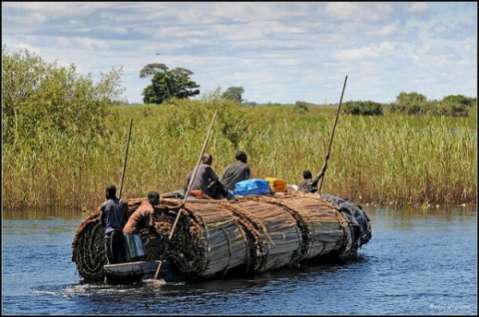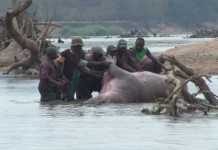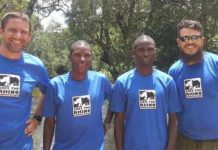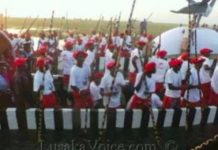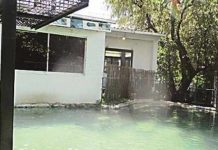Sprawling acres of land, rivers teeming with a variety of fish species, waterfalls of angelic magnificence, wild animals roaming freely, birdlife beguiling the gaze of nature-lovers, to mention but a few amply describe the riches of the country beyond measure.
It is a lucid fact that Zambia has one of the world’s wonders in water resource – the mighty Victoria Falls traditionally known as the Mosi-O-Tunya, which means the smoke that thunders.
The Victoria Falls, as a natural water wonder, has undoubtedly fascinated and attracted millions of tourists from around the globe, making it one of the top water rated tourist destinations.
There is so much more unexplored water wonders like unbelievable natural hot springs and the amazing hidden life under many of the water bodies. Zambia has in excess of 80 hot springs
Many of Zambia’s fresh water bodies are not fully explored but underutilised as a drinking source for the local people and domestic animals near these waters.
Domestic use of these waters could be one of the cardinal uses yet, though there are more benefits from these waters than what just meets the eye.
Most of these potential water bodies are located especially in areas where road infrastructure has not been fully developed, which makes access to these places difficult or indeed impossible for potential tourists.
One of such water attractions that has undeveloped road infrastructure is the Chinyunyu hot spring off the Great East Road.
Chinyunyu is just 50 kilometres away from the cosmopolitan capital city of Zambia, Lusaka.
This is one of the natural water wonders that has remained ‘hidden’ from most potential tourists who would love to branch off the Great East Road to tour the natural wonder.
This is a 100 per cent natural hot spring with hot water amazingly bubbling from the sandy bottom. The water is clear and surrounded by wonderful thick tropical vegetation that has made a lot of tourists question whether hot water could support plant life.
It is imperative that the Zambia Tourism Board revisits tourism potential that the country prides itself with.
It is only true that Zambia is one of the richest countries in the Southern African Development Community (SADC) region where water resources are concerned.
This is because the country holds 65 per cent of the water bodies in the SADC region.
The country is endowed with various rivers, lakes, waterfalls and other water bodies, most of which are located on traditional land.
Former House of Chiefs chairperson Senior Chief Madzimawe of the Ngoni people of Chipata District appealed to the Government to engage traditional leaders in a quest to promote the country’s water bodies, in relation to tourism activities.
The traditional leader said the active involvement and participation of traditional leaders in the promotion of tourism would boost the country’s tourism potential.
He called on the Government to identify and open up all untapped water bodies that are a source of tourism.
“The country has vast potential to exploit water-related tourism activities. We now need to identify and open up other areas with water bodies, and this information should be brought to the knowledge of the public as a way of encouraging both local and international tourism,” he said.
And Chief Chisunka of the Ushi people of Mansa District in Luapula Province regretted that despite having vast water bodies, Luapula Province has not benefitted much from tourism activities.
He appealed to the Government to ensure that more investments are made towards the promotion of tourism activities in the province.
Chief Chisunka, who is also chairperson for the Luapula Royal Foundation, said besides the numerous water bodies in the province, the area also has the potential in fishing, which he said could be a source of tourism activities.
“We also have a lot of white sand on the shores of Lakes Mweru and Bangweulu, which can be explored by tourists, besides other water-related tourism activities such as white water rafting, which can be tapped into,” he said.
Tourism accounts for a minor share of global water use, and in comparison to agriculture, which constitutes an estimated 70 per cent of total water consumption, tourism is far less relevant at one per cent.
Yet tourism is often a major user of fresh water in areas where water is scarce, and its contribution to water consumption can be nationally and regionally significant.
Water consumption rates are reported to be in the range of 84-2,000 litres per tourist per day.
While tourism is a potentially dominant factor in total water consumption in certain holiday destinations, its overall significance for local or regional water resources is dependent on the context.
Citizens have made calls on the need to ensure that the country’s water resources are maximised to promote tourism centered on water activities.
It now remains incumbent upon the Government and other stakeholders to heed calls to ensure that Zambia places itself on the world map as it promotes and showcases its water tourism potential.

 JOIN DRIVERN TAXI AS PARTNER DRIVER TODAY!
JOIN DRIVERN TAXI AS PARTNER DRIVER TODAY!